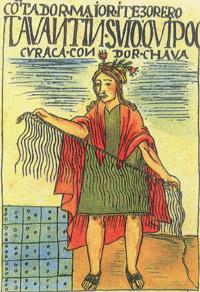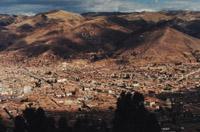Tired rocks
1999/10/01 Ezpeleta Arenaza, Txema | Ruiz-Larrea, Isabel - Irakaslea eta ikertzaileaFisika Aplikatuko Saila II, EHU Iturria: Elhuyar aldizkaria
The extraction of large blocks of stone from the quarry, and its subsequent transfer, under the direction of a boss, was a work to be done with discipline and sustainability. As indicated above, the Incas used ropes, rollers and especially all the human force they could carry stones. The truth is that they achieved a great success at work, since there were very few rocks that had remained on the verge of accidents. There were some stones left in this situation and the Incas called fatigued stones. In addition, taking these tired stones as their theme, they invented startling legends.
As an example, Garcilaso de la Vega, chronicler cholo (mestizos) who was called "Inka", is the XVI. Adaptation of a part of the book "Real Comments" written in the nineteenth century.
Evolution of fatigue
According to the Indians, the weariness and sufferings he suffered to reach his current place caused the tiredness of the stone, the emission of tears of blood and the inability to reach the building. The stone is unworked, as rough as it was in the place where it was extracted. Much of the stone is buried and now I have been told that it is more within what I saw. The Indians believed that under the stone there was a treasure and, trying to get it out, they began to dig the land and finally the stone was more interior. At one end it has a couple of holes and, if I'm not mistaken, the holes cross the stone side by side. According to the Indians, the holes are the eyes of the stone, place where the tears of blood spilled. Due to the dust and rainwater that accumulate inside the stone, a reddish mud is formed that, when it rains, leaves a red footprint, since the surrounding soil is red. But according to the Indians, the trace found on the ground is that left by the blood shed by the stone. Many times I have heard this legend from the Indians.
The historical truth, however, was narrated by the Incas, dressed, wise and philosophers. According to them, the pedrisco was brought by more than 20,000 Indians pulling thick ropes. They were very slow because they had to be very responsible. The road that carried the stone was very steep, with several slopes difficult to climb and descend. Half of the Indians threw at the front of the stone and the other half were at the back, holding the stone so it would not collapse.
When they were on a slope, they had a mistake and didn't throw them all together. As a result, with the weight the stone yielded, and it descended on a slope, killing three or four thousand Indians who carried the stone on the road. Despite this disaster, it was finally picked up to the current camp. The Indians said that the stones were shed by tears of blood because they could not reach the building, but the blood was shed by the Indians themselves. They say that the stone got tired and that it could not reach the goal, but they got tired throwing the stone. Thus, what happened to the Indians was attributed to the stone. These kinds of stories taught their children to keep in their memory.

Gai honi buruzko eduki gehiago
Elhuyarrek garatutako teknologia





